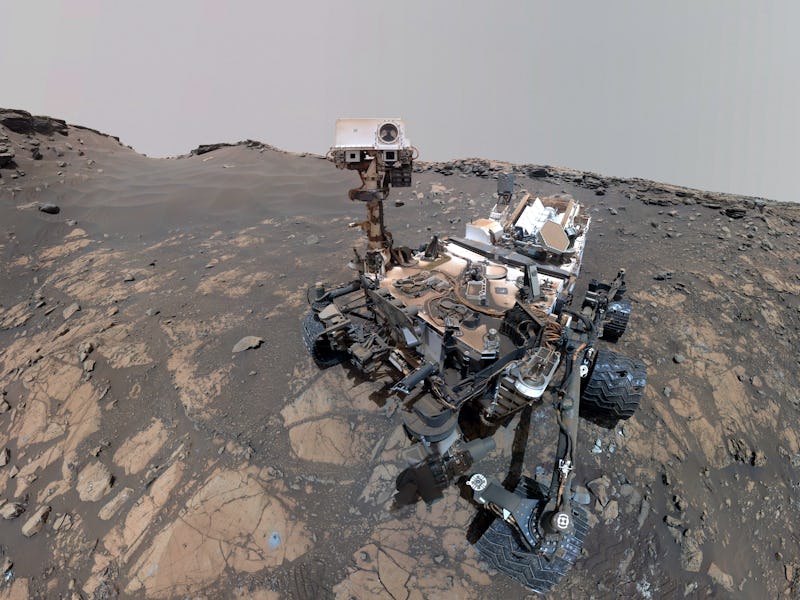New NASA video answers a most curious question about the Mars Rover
If this rover is alone on Mars, then who is taking the picture?

Like most of us. NASA’s Curiosity rover is spending its time in isolation. Only it's doing so on the Red Planet. And, perhaps like you, Curiosity is passing the time by taking pictures of itself.
The Curiosity rover has been on Mars for more than seven years, and is known for taking "selfies" during its breaks from exploring the Martian surface.
NASA has released a new video that explains just how Curiosity is able to capture itself in its full robotic glory, and what makes the rover superior at taking selfies than the rest of us. So, take notes y’all.
First, you’ll need a robotic arm.
As shown in the video, the Curiosity rover uses a camera on the end of its arm called the Mars Hand Lens Imager to take several pictures that are then stitched together for the final result.
For this particular selfie, Curiosity took a total of 86 pictures on February 26, 2020.
"We get asked so often how Curiosity takes a selfie"
The sped-up video illustrates the process from the robot’s point of view.
"We get asked so often how Curiosity takes a selfie," Doug Ellison, a Curiosity camera operator at NASA’s Jet Propulsion Laboratory, said in a statement. "We thought the best way to explain it would be to let the rover show everyone from its own point of view just how it's done.”
Curiosity rotates the camera, which is placed on a turret on the robotic arm. The camera can only capture a very small area with each picture, which is why more than one image is required to show the full rover’s body.
Therefore, the robot also has to move its arm into different positions to capture different angles.
Once it’s done, the robot slides the cover over the camera lens and beams down the images to NASA’s Jet Propulsion Laboratory in Southern California.
The final product shows the Curiosity rover standing in the midst of the Martian terrain.
Of course, the Mars Hand Lens Imager is not just designed for vanity. The main purpose of the camera is to act as a magnifying glass for Curiosity as the rover analyzes grains of sand and rocks on the Martian surface.
Curiosity was launched into space in November, 2011 and landed on Mars on August 5, 2012. It followed in the tracks of its predecessors Sojourner, Opportunity, and Spirit, and will soon be followed by the Mars 2020 rover which is scheduled to make its journey in July.
Curiosity captured this image of itself in October, 2015 at the Big Sky drill site on Mars.
The car-sized robot was sent out on a two-year mission to find out whether Mars ever had the right environmental conditions to support life during its early history. But more than seven years later, and the rover is still roaming the Martian surface looking for clues and collecting evidence.
Curiosity took this selfie on October 11, 2019.
Just recently, Curiosity performed one of the toughest challenges faced by the rover since it launched to the Red Planet. On March 6, the Martian explorer made it to the top of the Greenheugh Pediment, setting a record for the steepest terrain it has ever climbed.
Since it landed on Mars in 2012, Curiosity has been roaming the Gale Crater and discovered a lake that may have contained water billions of years ago and an environment that could have possibly supported microbial life.
Curiosity experimented with a low-angle for this selfie dated August 19, 2015.
Curiosity will soon be joined by the Perseverance rover, scheduled to launch in July-August, 2020, which is on a mission to look for clues of past life on Mars and pave the way for the first human-led mission to the red planet within the next decade.